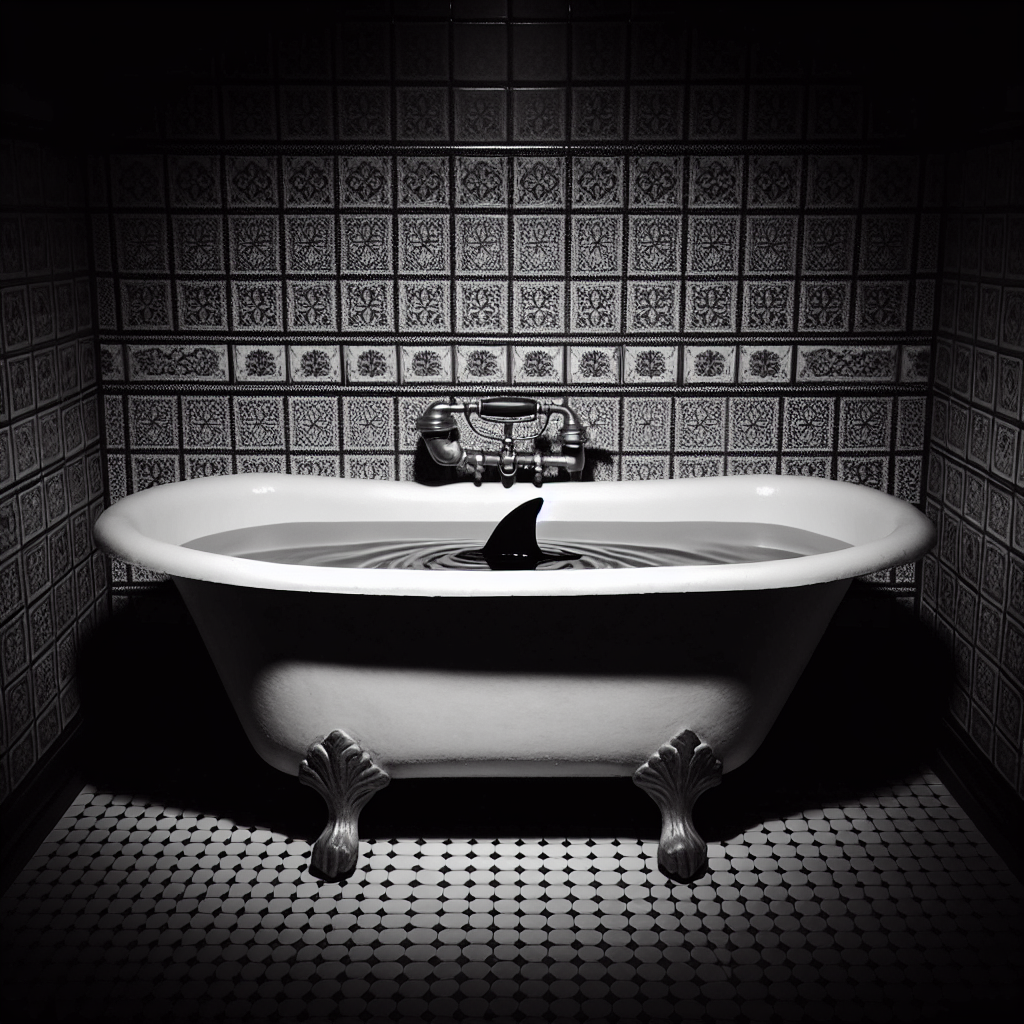The Unseen Terror: When Jaws Invaded Our Bathrooms
Let’s get real for a hot second—Jaws, that 1975 Spielberg classic, didn’t just scare us; it scarred us. There I was, a wide-eyed kid who thought bathtubs were just for bubble baths and rubber ducks, until Jaws came along and turned every puddle into a potential shark attack. Were there sharks in the bathtub? Logically, no. Emotionally? Heck yes!
For those who somehow missed out on this cinematic gem, Jaws is the thrilling tale of a monstrous great white shark terrorizing the small island community of Amity. The opening scene alone, with that haunting John Williams score, was enough to make anyone swear off water for life. Spielberg, you master of suspense, you turned our bathtubs into deep, dark oceans.
Why Did Jaws Affect Us So Deeply?
It’s all about the primal fear, baby! Sharks are the perfect monsters. They’re silent, they’re hidden deep below, and they embody the unknown. Spielberg’s genius lay in exploiting these fears. He kept the shark largely unseen for most of the film, building tension through suggestion and letting our imaginations run wild. Suddenly, every time I dipped into the bath, my mind was conjuring up dorsal fins out of the soap suds!
Psychologically speaking, Jaws exploited a common fear of the unknown combined with a specific phobia called selachophobia (fear of sharks). It’s the same reason why many of us find the deep ocean or even space terrifying—the less we see, the more we fear.
Cultural Impact and Lasting Legacy
The impact of Jaws wasn’t just limited to our screens or even our bathtubs; it rippled across oceans. It spawned a series of sequels and countless imitations, and more importantly, it influenced how generations viewed and interacted with the ocean. Even marine biologists have discussed the “Jaws effect,” noting a rise in fear and fascination towards sharks.
Moreover, Jaws significantly impacted the thriller genre, setting a template for suspense-building that movies and TV shows continue to emulate. Ask any film buff, and they’ll tell you that the techniques developed in Jaws can be seen in everything from Alien to Stranger Things.
Personal Reflections: Beyond the Fear
Despite the initial trauma, Jaws made me respect the power of filmmaking. It showed me that movies could evoke real emotions—fear, anticipation, relief—and connect people through shared experiences. Yes, it made me scared of the bathtub, but it also sparked my lifelong love for cinema.
Every splash in the water, every shadow in the tub, became a story. It was terrifying, but it was also thrilling. That’s the paradox of great horror; it scares us, but it also fascinates us.
Concluding with a Splash
In closing, Jaws was more than just a movie about a shark. It was a cultural phenomenon that changed the way we interact with the world around us. It made us fear the water, sure, but it also made us fall in love with the art of suspense and cinema. So here’s to Jaws—the reason I needed a nightlight for my nighttime baths!
And if you’re keen on exploring more about cinematic impacts, check out When Bad Movies Become Cult Classics to dive deeper into how certain films gain cult status despite, or perhaps because of, their flaws.


